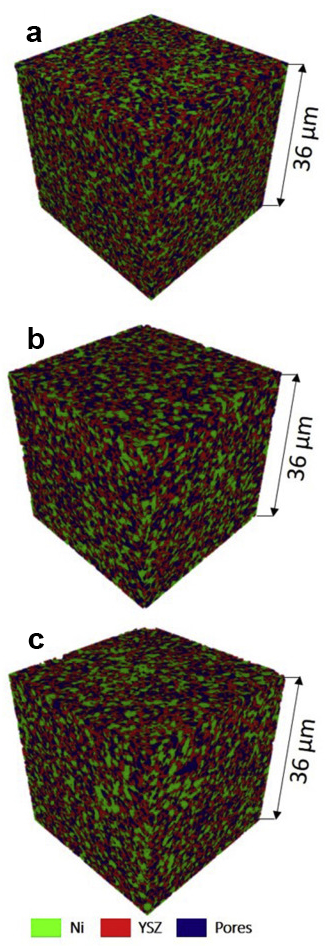- Home
- Industry
- Industry news
- Making solid oxide...
Making solid oxide cells more durable
10-10-2018
Industrial researchers from the ESRF, CEA and the company SOLIDpower, have studied how solid oxide cells, used in fuel cells and electrolysis modes, degrade over time.
Share
Solid oxide cells (SOC) are promising energy conversion devices that can be used to produce electricity (fuel cell mode) or to produce hydrogen that can be stored for a later energy demand (electrolysis mode). This technology is especially interesting as it can offer a high conversion efficiency due to the high operating temperature. However, the degradation rates (cell voltage loss at a constant current density over the time ) are still too high to consider a large scale deployment of this technology.
“If the performance losses were limited to roughly 1% per 1000 hours, it would be economically viable to use them, but current degradation rates are higher than that, especially in electrolysis mode”, explains Maxime Hubert, post-doctoral researcher at the ESRF.
 |
|
Post-mortem characterization of the H2 electrode. Images of the electrode/electrolyte interface, obtained by X-ray nanotomography, for (a) the pristine cell, (b) Cell no4 and (c) Cell no5. |
Researchers believe that processes like electrode poisoning, material instabilities, interdiffusion and reactivity, all caused by high operating temperatures, could well be behind this degradation. They also think that the component of the H2 electrode, Ni-YSZ cermet, changes its structure during operation which could play a significant role in SOC deterioration.
SOLIDpower is one of the world’s leading companies in the field of high-temperature fuel cell technology. Their devices are used to generate power and heat in buildings across Europe. In the framework of two projects funded by the European Union, they studied representative cells in collaboration with Maxime Hubert and Jérôme Laurencin. The team was trying to see the microstructural degradations after operation in electrodes.
Scientists carried out long-term durability tests at CEA in fuel cell and electrolysis modes at high temperature (750 and 850 °C). They took the samples from aged electrodes to study the microstructural evolution of the Ni-YSZ composite. In order to see these fine evolutions, they had to use a highly sensitive characterization technique: X-ray nanotomography. So they went to ESRF’s beamline ID16A, specialised in this technique and highly relevant to image representative volumes with a spatial resolution of few tens of nanometres.
The 3D analysis of the data obtained by nanotomography revealed a nickel agglomeration after operation. The reorganisation of the nickel phase induces a decrease of the electrochemically active sites (the so-called “triple phase boundary lengths”), which directly affects the SOC performances. Researchers also found out that the growth of the nickel particle is thermally activated. The team also simulated the Nickel coarsening using a sintering model adjusted on the microstructural characterisations. Simulations show that microstructural changes in the H2 electrode explain ∼30% of the total degradation in fuel cell mode and ∼25% in electrolysis mode at 850 °C after 1000–2000 hours of operation.
Hubert M., et al, Journal of Power Sources, Volume 397, 1 September 2018, Pages 240-251.



